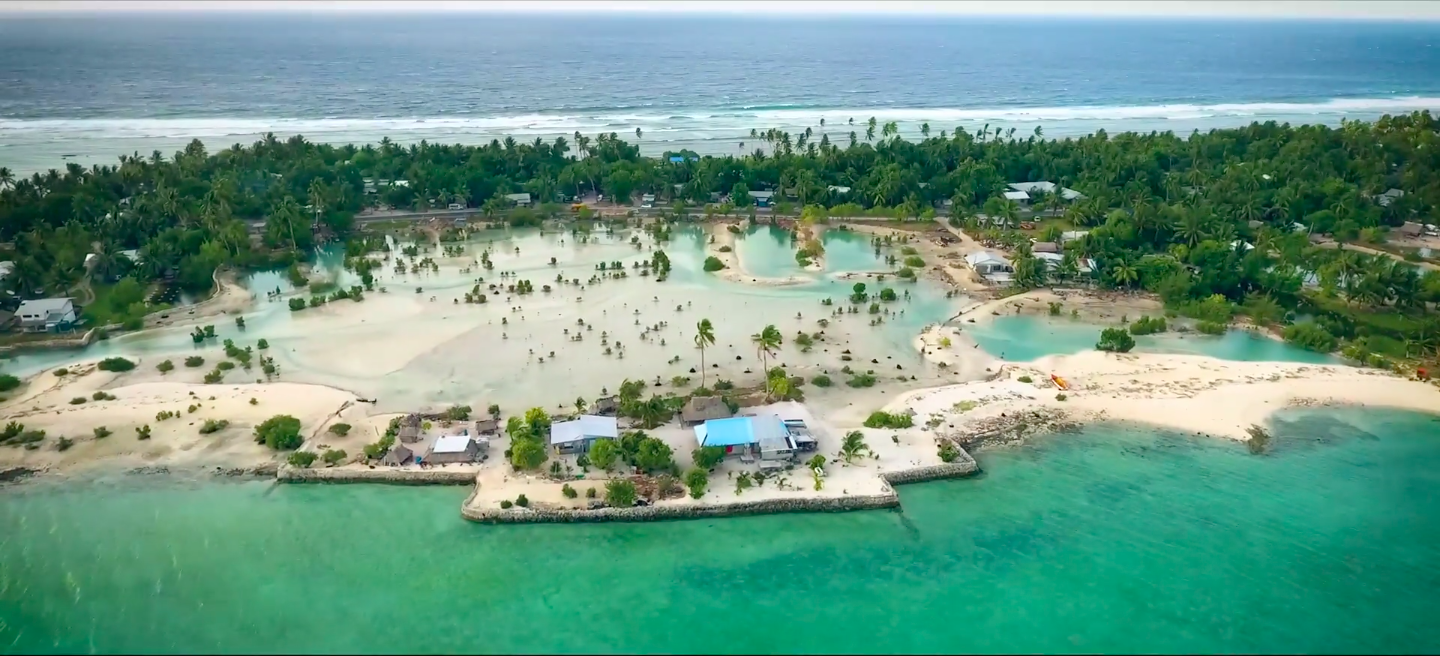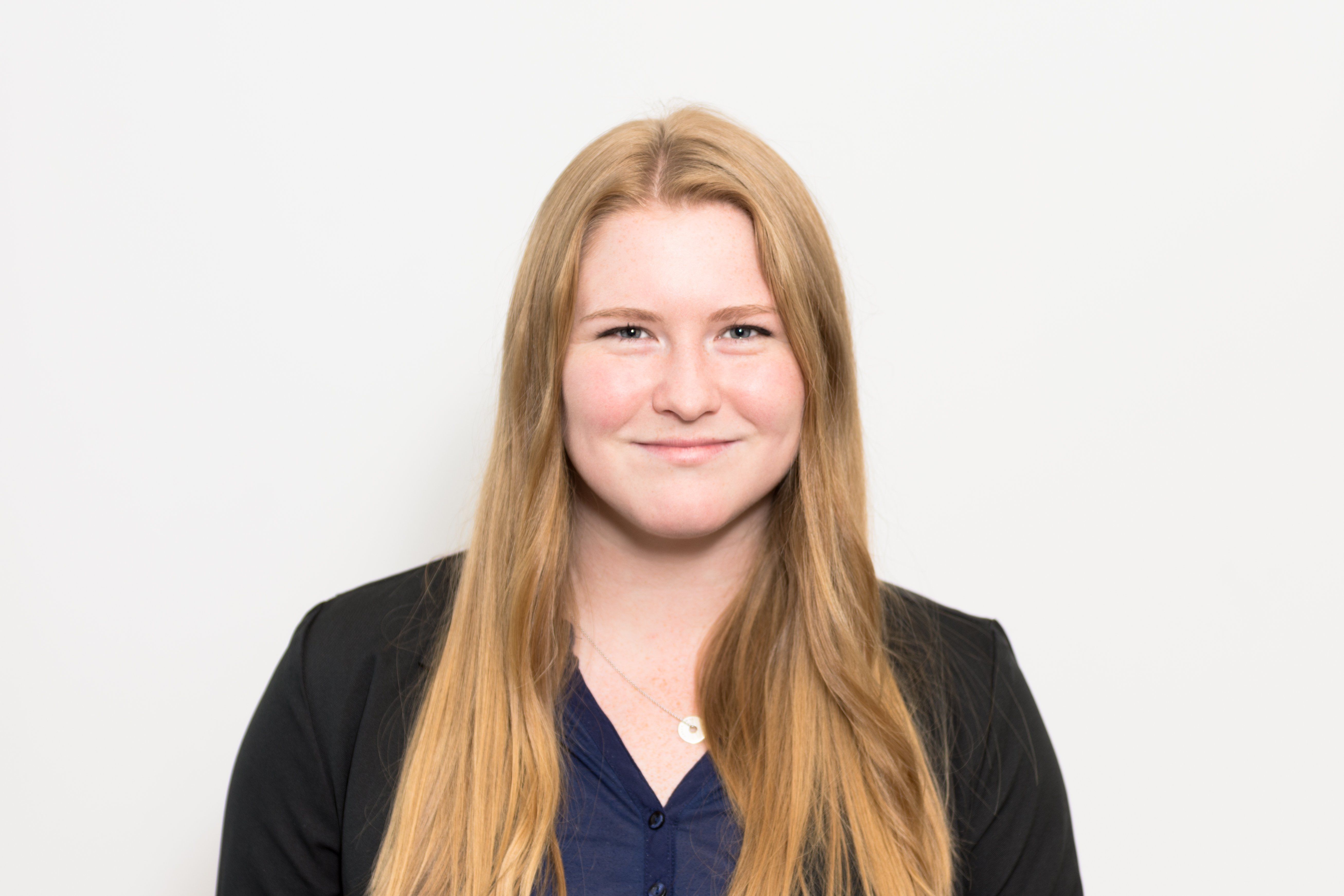
This Bold New VR Campaign By WSJ Transports Viewers Around the World
Imagine standing knee-deep in the turquoise waters of a sinking island in the middle of the Pacific Ocean.
Moments earlier, you were looking down at Earth from the depths of space. In a few minutes, you’ll be transported on yet another adventure around the globe.
This is all part of Morgan Stanley and The Wall Street Journal’s (WSJ.) Custom Studios latest collaboration, which tells the stories of companies and technologies Morgan Stanley has invested in that are making global improvements in sustainability and mobility.
To fully immerse the audience in the narratives, David Lennon, Global Creative Director, WSJ. Custom Studios, and his team produced three incredible VR films. The films transport viewers to the island nation of Kiribati, a 250-megawatt solar plant in the Nevada desert and the busy streets of San Francisco.
We all felt the topic of sustainability deserved something compelling, something different.
If you don’t have a VR headset, you can still enjoy the standard short films they made for each topic on the Capital Creates Change project site.
While Morgan Stanley has long been a major player in the traditional advertising world, they challenged WSJ. Custom Studios to create something that evoked a more personal connection with the issues of climate change and sustainability — something banner ads could never accomplish.
“We all agreed that showing the effects of climate change happening today would be a great setup for the important work that companies around the world are invested in to try and turn the tide,” says Lennon.
Fara Warner, Global Content Director, WSJ. Custom Studios, echoes Lennon’s statement: “We all felt the topic of sustainability deserved something compelling, something different, and ultimately something that would capture our audience in a very different way.
Using 360° video storytelling provided us with that breakthrough medium that was going to get a lot of attention on an issue that deserves all of our attention.
One of the VR experiences, “Kiribati Up Close,” drops viewers on the island nation of Kiribati, which is seeing the effects of climate change first-hand. Most of Kiribati rises no higher than six feet above sea level, and many residents fear that they will have to leave the island for good.
At the Edge of Climate Change
Taking a break from their jet-setting adventures (both virtual and literal), Lennon and Warner spoke to us about their experience and offered advice for fellow content creators.
Pressboard: How do you define the value of VR to a brand partner?
David Lennon: Morgan Stanley was eager for something new and stunning. VR was brought up as one of the possibilities of doing that and as this campaign will live on in headsets at university hiring events Morgan Stanley throws, we wanted to make sure that we had something really compelling to share.
What was the most challenging part of pulling such an enormous project together?
DL: We all agreed that showing the effects of climate change happening today would be a great setup for the important work that companies around the world are invested in to try and turn the tide. Our internal team first brought up the idea of Kiribati. When we looked into how they were literally in danger of being washed away, we knew we could tell a great story there. The only problem was how remote it was: a small island nation in the Central Pacific. We’d need a great local contact on the island to help us through the shoot.
The First Solar shoot in Nevada was going to be in dry desert heat, so we needed to shield equipment and crew from the heat. We’ve never experienced heat like that and at one point, we fried a camera on the drone as the temperature over the solar panels magnified the intense heat.
Harnessing the Sun’s Power
Finally, San Francisco was always going to be a beautiful city to shoot in but film permitting became a real issue. It was thanks to our production team and location scout that we got the exact shots we needed to bring the uberPOOL story to life.
Fara Warner: One of the challenges for the team was marrying the immersive nature of 360° video storytelling within a custom digital experience that also included traditional video and text. We needed to find an easy way for our audience to navigate between all of the elements so they could explore all the pieces, not just the 360° video. We worked with Morgan Stanley to create a compelling digital experience that is easy to navigate and makes certain that all the storytelling elements come together in one seamless integration.
Using 360° video storytelling provided us with that breakthrough medium that was going to get a lot of attention on an issue that deserves all of our attention.
The standard short films are excellent in and of themselves, so where did the idea to create the VR films come from?
DL: Originally, this was thought of as a VR-only project. We intended to create the VR film experience just for headsets. But after we continued to think about it and speak to our peers in the industry, we began to see that rather than VR as “the new video,” it should be used as a companion piece — much in the same way a written editorial or infographics tell a different side to the story.
The short films give you an emotional connection to the people and places so that when you put on a headset, you are taken to a journey each location. To close, a written editorial brings through the finer details.
What challenges does VR present for branded content campaigns compared to standard video?
DL: It’s the Wild West period of VR right now. Lots of people are interested in it, lots of people have the equipment, and lots of people promise you that it’s going to be amazing. It rarely is though.
We partnered with Infinite 360°, which is a company born from a traditional post-production house, so their entire team understood real-world production and could apply those same high standards to the pre-production, shoot and post-production to deliver the super high-quality work you see. We had a great working relationship with them and all teams learned a lot from this experience that we can apply to future projects.
The New City: Carpooling in the Digital Age
FW: I think the biggest challenge for our team was making certain we had compelling stories to tell in 360°. It can’t simply be the “newness” of any technology that makes you use it. It has to be used to its best advantage and in collaboration with other tools that we have traditionally used such as traditional video, long-form storytelling and data visualizations.
[VR] should be used as a companion piece — much in the same way a written editorial or infographics tell a different side to the story.
Did you encounter any major obstacles or surprises during production?
DL: Everywhere we went, people wanted to meet us and tell us their story. At the end of the week [of filming], we took a drone out on the southern tip of [Kiribati] and captured great footage that was ultimately used at the start and end of the video. Once we had the shots and before the batteries ran out, I brought the drone in to the shoreline and about 200 local kids on the beach that had gathered around went crazy. The batteries died, and just as we landed the drone, the heaven’s opened up. We spent the next hour sheltering under a kind neighbour’s roof until we could make it back to our van.
What was the best part about working on this program?
FW: I had watched the 360° videos in a flat environment for most of the time we were creating the digital hub. I’d seen much of the work piecemeal. But one day right before the launch, Dave and Renee called me into a conference room. They put the headset on me and I was immediately dropped into Kiribati. It was both heart-breaking and heart-warming to hear and see how this island and its people are facing global climate change. I always say to our team that if you can make me feel something, if you make me cry or inspire me or wow me, then you’ve done your job.
Pressboard would like to thank David Lennon, Fara Warner and WSJ. Custom Studios for speaking with us and contributing to our latest e-book.
Note: This article appears in Pressboard's Complete Guide to Branded Content.
Branded content has become way more than a buzzword. This form..
Get your Content Marketing Fix
Sign up to receive tips on storytelling and much more.
We promise to respect your inbox.



